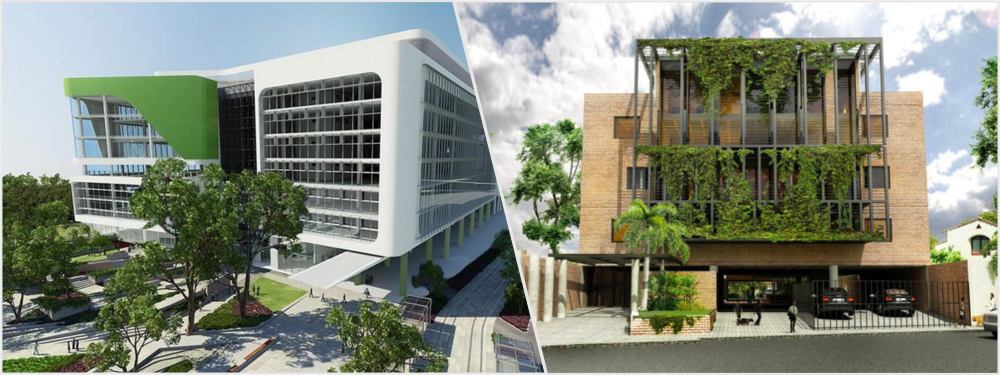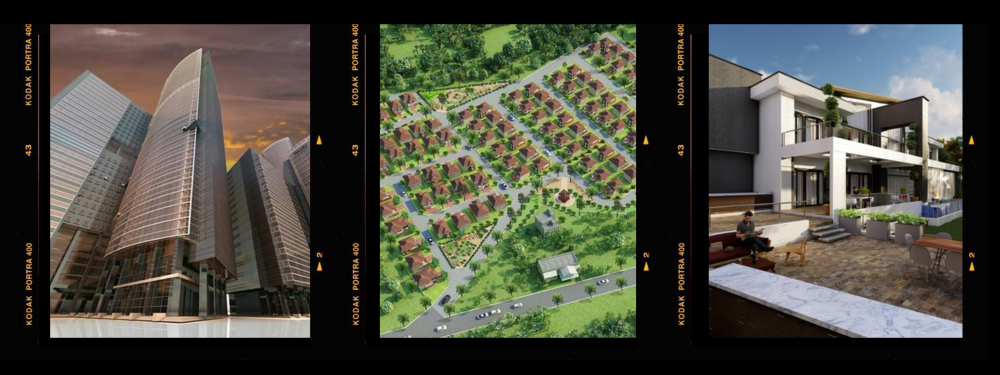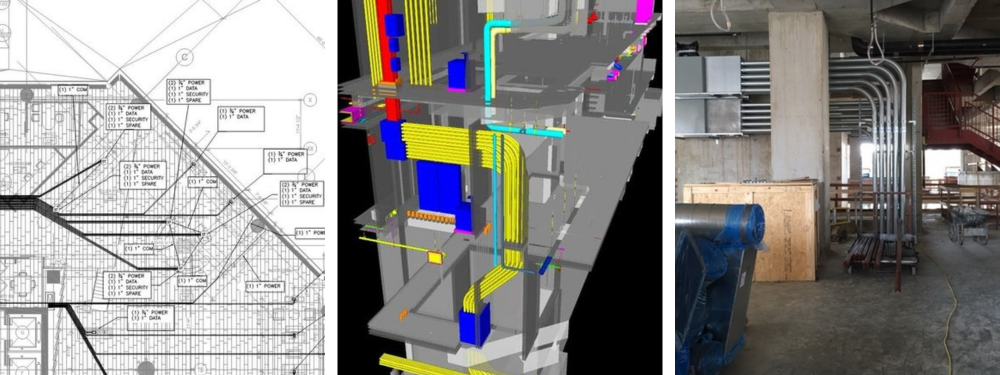The construction sector is witnessing a substantial technological evolution that optimizes procedures and bolsters productivity. A key contributor to this revolution is computer-aided design (CAD), which provides valuable advantages to firms offering construction design & drawing services. CAD integration facilitates enhanced construction design, expedites project schedules, and minimizes expenses.
This piece delves into the significance of CAD construction design & drawing services in modernizing 2D and 3D drafting approaches. Incorporating CAD into your operations allows you to revamp your design methodologies and remain at the vanguard of industry progress.
What is CAD?
Building construction design professionals, architects, engineers, and construction managers utilize CAD to create detailed and accurate designs. CAD designs encompass precise illustrations or plans for new buildings and can be represented in either 2D or 3D formats. The specific capabilities of CAD software vary, with some programs offering exclusively 2D or 3D design, while others provide both options.
CAD offers essential features like detecting design flaws, ensuring accurate measurements, and performing advanced design analysis. CAD software uses X, Y, and Z coordinates representing horizontal, vertical, and depth dimensions to create 2D or 3D models based on project needs.
Also called CADD, CAD is a tool for architects, engineers, and other professionals to design and draft buildings. CAD technology originated in the 1960s, enabling designers to create computerized drawings, while the 1970s saw manufacturers increasingly adopting CAD for design and interaction. Nowadays, CAD, although well-established, continues to evolve and play a crucial role in modern design and construction across various industries.
RELATED: The Advantages of CAD (Computer-Aided Design) & 3D Design Software
Is CAD 3D or 2D?
CAD, commonly perceived as solely a 3D modeling instrument, offers much more versatility than many realize—it also functions as a platform for 2D drawing. Construction drawing experts, including those providing freelance 2D to 3D conversion services, can utilize a CAD tool dedicated to 2D drafting. Additionally, architects can work with a 3D design tool equipped with 2D conversion capabilities.
The choice of tool largely depends on the specific CAD platform employed. The advantage of using an exclusive 2D design tool lies in its cost-effectiveness, as companies pay solely for the design tool they use. However, with the contemporary construction landscape increasingly emphasizing information-rich models and 3D representations, relying only on a 2D design tool may pose challenges for companies.
Freelance 2D to 3D conversion services are crucial in bridging this gap by providing the necessary expertise to convert 2D drawings into detailed 3D models, ensuring that companies stay aligned with modern construction trends and reap the benefits of both 2D and 3D modeling.

Uses of CAD in construction
CAD has numerous construction applications, including 3D construction rendering services. Professionals can use these services to enhance architect-provided drawings with added details for better project execution, serving as a reference throughout the construction process.
Companies have successfully integrated CAD, 3D models, rendering services, and drone technology to detect discrepancies. For example, live drone footage can be superimposed onto a 3D-rendered model for real-time identification of deviations and prompt corrections.
Contractors benefit from CAD and 3D rendering services, primarily through cloud-based storage of plans and drawings, which enhance collaboration and convenience. Shared project files allow for easy review, tracking, and communication of modifications.
CAD’s precision and the visual impact of 3D rendering services offer greater accuracy and ease than manual drafting. Subcontractors can incorporate details and use 3D rendering services to convey design intent, ensuring consistent execution and contributing to construction project success.
RELATED: How 3D Modeling, Rendering, and CAD Design Helps Architects Create Sustainable Construction
Benefits of CAD drawings in construction
Below are some of the benefits of CAD drawing services for architects, structural engineers, project managers, and contractors:
- The number one advantage of CAD in construction is the precision and accuracy achieved for technical drawings. There are several convenient automation tools for customized programs to alter and modify existing drawings for quick changes easily.
- CAD, including 3D high-rise rendering services, empowers project managers to visualize every building component, from foundational steel beams to the most minute screws. It generates an exact blueprint of the structure, whether a traditional skyscraper or a towering high-rise and presents it in a readily accessible format. Leveraging the visual insights offered by 3D high-rise rendering services, project managers gain the flexibility to assess and determine whether any design elements warrant modifications, thereby ensuring optimal construction outcomes.
- Through the integration of structural engineering CAD services, structural construction engineers are equipped with the tools to create highly accurate representations of structural elements and designs. These services enable structural engineers to make informed adjustments and modifications, enhancing the overall design quality. Structural engineering CAD services provide a platform for meticulous planning, precision, and adaptability, all essential to achieving excellence in structural design and construction.
- By using 3D modeling design services, architects can create detailed 3D models of building elements, including plumbing and electrical systems. These comprehensive designs improve accuracy, minimize changes, and reduce unexpected issues during construction. Architects and construction teams leveraging 3D modeling services can expect smoother project execution and successful outcomes.
- CAD uses the design parameters and objectives such as manufacturing or construction costs and method, the cloud’s computing power, and materials. The cloud computing power will generate different design options based on the parameters and objectives.
- CAD and 3D rendering government services offer exceptional visualization for designing public infrastructure like buildings, bridges, and roads. This technology provides an immersive view of the finished structure, helping earthwork crews, government agencies, and stakeholders understand the project, align with design intent, and make informed decisions during construction.
- CAD also allows structural engineers to create maps and examine specs across a stretch of land. The research makes reaching educated designs for tunnels and railways easier, reducing expensive redrafts and potential errors.
- CAD makes it possible to access construction design plans from the cloud, allowing you to pull them up on your smartphone instantly.
- Freelance AutoCAD design and engineering services empower conceptualists to turn ideas into 3D designs, fostering collaboration among development team members. This allows for collective evaluation, swift implementation of suggestions, and optimized design. AutoCAD services streamline design processes, improve communication, and guarantee design excellence throughout the project.
RELATED: How the Construction Industry Benefits from Architectural Visualization Services

Different types of CAD in construction
The construction industry uses two different types of CAD software:
1. 3D or 2D CAD for technical drafting and drawings
Technical drawings created with 3D or 2D CAD software provide detailed information about an object’s composition, dimensions, shape, and insights into its fabrication process. There are two distinct types of drawings in this context. The first drawing, a sketch, is created freehand without drafting instruments and is a preliminary representation of the design concept.
The second or final drawing is produced precisely and guided by specific instructions. Final drawings are often created using CAD software to ensure accuracy and adherence to design standards, and they serve as the authoritative reference for the object’s construction or manufacturing.
Technical drawings also have several different types, such as:
- 3D drawings (perspective, isometric)
- Complete working drawings
- Exploded-view 3D drawings
- Detail drawings (2D orthogonal projections)
After the design is ready, drafters will use CAD software to create 2D drawings and floor plan design services, landscape design services, building inspection plans, and building permit drawings.
CAD software for drafting can also come in handy for faster and more precise drafting of designs without using technical drawing instruments and stencils. It lets users annotate and document drawings with tables, leaders, dimensions, and text.
3D or 2D technical allows technical drafters to make the necessary revisions if errors occur. It is more reliable, unlike manual drawings, where drafters will be required to draw everything again from scratch.
RELATED: 5 Reasons Why Your Business Should Use 3D Rendering for Construction Projects
2. CAD solid modeling
CAD solid modeling is among the most common practices that different vendors use for outsourcing due to the increasing costs of construction and developing complex structures. This software also uses new-age tools to optimize, analyze, create, and modify object models or to develop special effects and animation of projects and buildings. Some of its functions are the following:
- A comprehensive view of proposed buildings from various angles with featured elements, shapes, and colors.
- Schedule quantity calculation and generation of a project.
- Reviewing the design elements before the start of the actual process of construction.
There are three types of CAD solid modeling, and these are 3D CAD for solid modeling, 3D CAD for surface modeling, and 3D CAD for wireframe.
RELATED: 3D Modeling for the Construction Industry: How 3D Models Help Construction Companies
CAD Trends and the Future of Construction
The construction industry is witnessing a transformative shift as architectural BIM services gain prominence in design and project management. As more and more companies adopt these services, the use of CAD software for construction design needs is expected to rise significantly in the coming years. Architectural BIM services enhance the accuracy, level of detail, and ease of use of CAD software, fostering healthy competition between small and large construction companies.
Integration is a key focus, as modern systems seamlessly integrate with project management and BIM platforms to facilitate efficient collaboration. Architectural BIM services enable project managers to conveniently attach CAD files to RFIs and make necessary changes to their orders. This capability streamlines communication by providing explicit references within documents, allowing stakeholders to pinpoint specific design elements.
Integrating BIM modeling services with CAD software and project management platforms revolutionizes the construction industry. It results in improved accuracy and reduced project timelines, bringing tangible benefits to construction firms today and in the future.

RELATED: What Are Redline Drawing Costs & CAD Drafting Rates for Construction Companies?
Summary
The construction sector is undergoing a tech evolution with the integration of CAD services, which modernize 2D and 3D drafting processes. CAD facilitates precise construction designs, accelerates project schedules, and reduces costs, making it an invaluable tool for architects, engineers, and construction managers. Additionally, CAD offers advanced design analysis, allowing professionals to identify design flaws and optimize construction outcomes.
The benefits of CAD extend to various construction applications, including 3D construction rendering services, structural engineering CAD services, and cloud-based storage of plans and renderings. The increasing adoption of BIM services further enhances CAD capabilities, enabling seamless integration with project management platforms and promoting efficient collaboration. Embracing CAD technology allows companies to remain at the forefront of industry advancements and achieve excellence in design and construction.
To modernize your company’s drafting process, request a free quote from Cad Crowd for CAD construction drawing services today.
